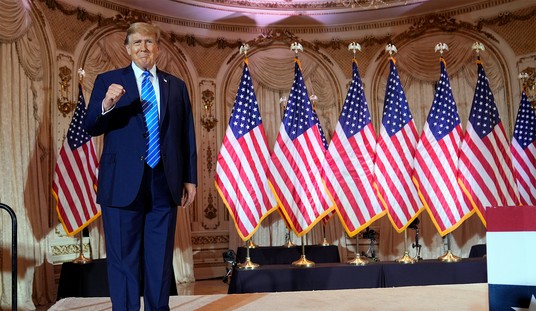Green, green everywhere. Spring blooms are here: nascent lime green buds and tufts of emerald green grass—proffering glimpses of God’s enchanting creation—long hidden under snow.
On the first day of Spring, my mother—an avid gardener—visited with a big smile and a small box of heirloom Rudbeckia and hollyhock seeds. “Do you have a rake and a watering can? Today would be a great day to plant!”
Rain and sun nourished the soil and soon two small leaves pushed through the ground—boldly declaring an intent to become a lofty plant. (Rudbeckia reach 2-to-4 feet in height, depending on the variety, while hollyhocks generally reach 6-to-8 feet in height.)
If sprouts have personality, this one was plucky: confident and valiant despite being vulnerable to dangers ranging from nibbling rabbits to late frosts. This seedling was going places. Up, up, up.
Like a child, I was awestruck by what I glimpsed in this diminutive inch-high sprout. I saw God.
God seems far away sometimes. Where is He as we struggle with epic unrest and corruption in our cities, schools and country? It’s common to feel lonely or timorous while imbibing the daily “news.” I’ve discovered that an almost instant remedy to the grip of the world’s woes is to look out a window or, better yet, to walk outside for five minutes—and contemplate something simply magical—like a full moon rising over a misty river in the early morning light, or the unified whoosh of a bat colony soaring at sunset.
Many Americans are busy, stressed—or both. In this heightened and unhealthy state of being, it’s easy to be oblivious to a glorious sunset. Wearing headphones to catch a conference call or podcast, we miss the cheerful dee, dee, dee wakeup call of the Chickadee; the powerful whistle of the Cardinal and the Hoo-OO-oooo-oo-oo lullaby of the Morning Dove.
Recommended
Monochrome Magic and Rare Jewels
“Diversity” and “inclusion” are hot topics today. Fortune 500 companies are hiring so-called experts in diversity as we speak. Will these efforts heal or hamper us in the goal of peace?
Nature has something to say about diversity in her quiet, bold way: God apparently loves diversity. God also seems enchanted by repetition. Green and blue are two prevailing colors in Earth’s landscape. Purple and pink are rarer colors, but nature certainly does not present these hues as marginalized minorities. Rather, when nature presents us with lilacs, Mountain Laurel and blushing roses, we innately see blooms that are extraordinarily lovely. In like manner, vibrant shades of orange and purple in coral reefs are not overpowered—but highlighted and accentuated—by the surrounding blue-green water.
What we don’t see in nature is despondency toward an unvarying field of sunflowers; a monochrome moor of heather; or a desert of unvarying sand. Nature presents that which is abundant, traditional or repetitive (not diverse) as equally beautiful and awesome to that which is uncommon (more diverse).
Grass could be purple. Or polka-dotted. Or glittery. It’s not. Grass has a traditional, monochrome appearance.
Plain green grass is magical to children—as evinced by the plethora of grass stains on their clothing. Children see a soft, dewy, emerald carpet. As G. K. Chesterton writes in Orthodoxy: “…when we are very young children we do not need fairy tales: we only need tales. Mere life is interesting enough. … [Fairy] tales say that apples were golden only to refresh the forgotten moment when we found that they were green. They make rivers run with wine only to make us remember, for one wild moment, that they run with water.”
Earth is a fairyland. God has chosen the finest tapestries for his Earthly palace: jade green carpets and indigo ceilings speckled with silvery clouds and sparkling stars. Unlike the static wallpaper that humans sell at hardware stores, God’s wallpaper produces dynamic light shows from dawn until dusk: breathtaking sunrises, fiery sunsets, shooting stars, constellations, lightning, rain showers, and double rainbows.
Children roll down grassy hills and splash in wading pools. Adults bury their sense of wonder in garish diversions—forming cliques and magnifying petty differences—instead of admiring gifts that all humans hold in common: free wills and immortal souls. No wonder children are happier than adults. Children live each day delighting in creation. And delight is a form of gratitude. Writes Chesterton: “The test of all happiness is gratitude.”
God doesn’t appear to have a favorite color—he loves his entire creation and uses both repetition and scarcity to accentuate the beauty of different aspects of that creation. Unfortunately, today, adults are trying to re-engineer God’s creation in the name of “diversity” in schools, churches and workplaces.
Diversity for diversity’s sake is not a worthy goal. Diversity may be a means to achieving a noble end, such as discovering innovative ideas through input from a wide range of perspectives. For example, it makes sense that women should be invited to pursue STEM (science, technology, engineering and math) careers. It does not make sense for academic institutions to pressure or ply women who would otherwise have little interest in STEM to choose this field for the sake of achieving a “perfect” mix (where women are the new majority)—while overlooking highly qualified men.
If mere diversity were an end, nature would look different. Let us rejoice in our variety while celebrating two gifts that we as humans hold in common—free will and an immortal soul. Let’s focus on being universally made in the image and likeness of a creator who loves us in our diversity and uniformity. Depression, bias and bigotry will dissipate once we stop calculating and start living, loving and being full human beings—all equal in the eyes of God.
“We shall look on the impossible grass and the skies with a strange courage. We shall be of those who have seen and yet have believed.”—G. K. Chesterton, Heretics

























Join the conversation as a VIP Member